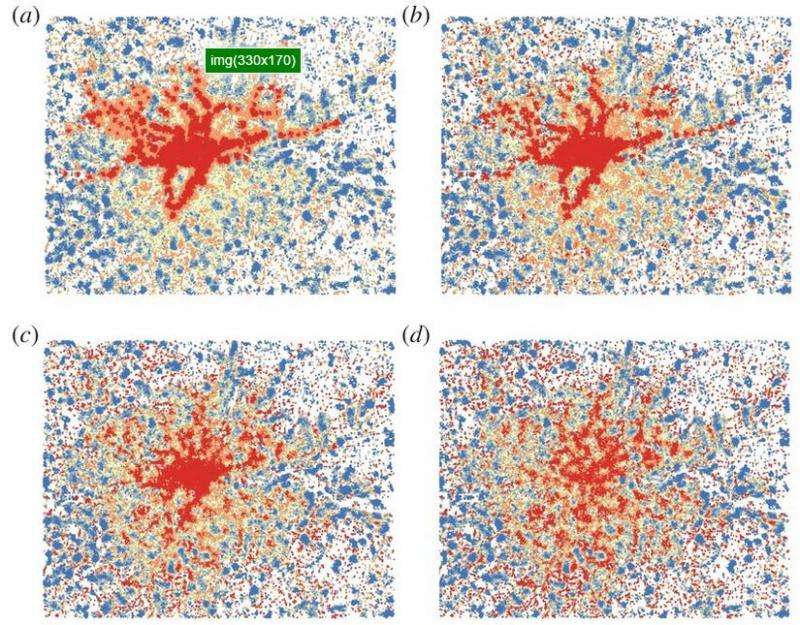September 28, 2015 report
Why slowing down London's subway could make it more efficient

(Phys.org)—An international team of researchers has found that because of interconnectedness between methods of transportation, slowing down trains in London's subway (The Underground, or tube) would actually increase efficiency. The group describes their math and computer models in their paper they have had published in the journal Royal Society Interface.
Simple logic suggests that if a city is going to build and operate an underground subway system, it would always be best to run those trains as fast as it is safely possible to do so—that would allow for moving the largest number of people in the shortest amount of time. The researchers on this new effort are not arguing that point, except for when other modes of transportation are taken into consideration as well. To come to these conclusions, they used a variety of mathematical formulas which they then used to build computer models.
The researchers retrieved data from Open Street Map on New York and London to obtain street, rail line and metro depot information for use in their models and in so doing found something surprising—because of its decentralized nature, trains running in London would appear to be more efficient if they actually ran slower than they do now. This is because, the researchers explain, when commuters get off the train they get into cars and that results in congestion—if the trains ran slower, congestion would not build and commuters would find their ride home a less stressful event. Subway trains currently run on average of 21 mph, the team's math suggest slowing that speed to 13 mph.
In New York, on the other hand, because the subway is more centralized and because of the extremely high degree of congestion, running the trains as fast as possible remains the best option.
The researchers note that their findings are based only on mathematical models thus far, which means their results do not necessarily reflect a real world scenario. They do point out however, that city planners clearly need to look more closely at the interconnectedness of transportation networks as prior studies have shown that there is a definite trend towards multimodal journeys by commuters and others, where people switch between different parts of a network to get from one place to another.
More information: Multiplex networks in metropolitan areas: generic features and local effects, Interface, Published 23 September 2015.DOI: 10.1098/rsif.2015.0651
Abstract
Most large cities are spanned by more than one transportation system. These different modes of transport have usually been studied separately: it is however important to understand the impact on urban systems of coupling different modes and we report in this paper an empirical analysis of the coupling between the street network and the subway for the two large metropolitan areas of London and New York. We observe a similar behaviour for network quantities related to quickest paths suggesting the existence of generic mechanisms operating beyond the local peculiarities of the specific cities studied. An analysis of the betweenness centrality distribution shows that the introduction of underground networks operate as a decentralizing force creating congestion in places located at the end of underground lines. Also, we find that increasing the speed of subways is not always beneficial and may lead to unwanted uneven spatial distributions of accessibility. In fact, for London—but not for New York—there is an optimal subway speed in terms of global congestion. These results show that it is crucial to consider the full, multimodal, multilayer network aspects of transportation systems in order to understand the behaviour of cities and to avoid possible negative side-effects of urban planning decisions.
© 2015 Phys.org



















